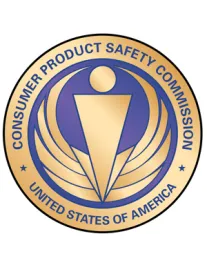With the disruptions wrought by COVID-19, companies are working hard just to keep pace with daily activities. But, as we wrote previously, companies still must meet their regulatory obligations – including obligations to report potential product hazards to the U.S. Consumer Product Safety Commission (CPSC). That may require additional effort in the current environment.
And, just to make things more complicated, the CPSC’s other activities are continuing. While it may have postponed the annual priorities hearing, the CPSC made its annual Midyear Adjustments without the usual public briefing, and the agency’s regulatory efforts continue, including a recent vote on crib bumpers that may have significant implications for many children’s product manufacturers, even those that do not make crib bumpers, as the agency explores the limits of its enhanced authorities under a law intended to regulate “durable infant and toddler products.”
Midyear Adjustments
In most fiscal years, the CPSC has surplus funds – usually the result of unfilled staff positions – that the Commission can re-direct through its Midyear Operating Plan Adjustments. Because these surpluses are unpredictable and the funds must be used in the fiscal year for which they are appropriated, the agency typically spends these funds on specific line-items, like information technology projects or contracts for research or other services. The CPSC avoids spending these non-recurring dollars on longer-term projects to avoid the risk of a project stopping and starting as funding varies. However, interested stakeholders should pay careful attention to how the CPSC ultimately spends this money, because today’s short-term research project could spur a rulemaking effort in a future fiscal year.
For FY 2020, a larger-than-expected appropriation from Congress made for an unusually large Midyear funding pool, about $8.5 million. The CPSC directed most of these funds either to previous commitments or to non-discretionary spending, like a government-wide pay raise. However, that still left $3 million available, and the Commission has approved a plan for those funds that lists $4 million worth of projects. That’s not a math error. Rather, the disconnect between the pot of money and the scope of the plan reflects the uncertainty of the funding and the limited time the CPSC has to spend it; if more money becomes available or if a contract for a higher-priority project cannot be signed by the September 30 end of the fiscal year, projects farther down the list may be funded. If a company is concerned about activity that falls “below the line” – i.e. on the list but farther down the list than the expected $3 million will stretch – the company should still pay close attention, as the line may move.
Within the $3 million projection – and thus most likely to be funded – are $2.45 million worth of CPSC IT projects and safety outreach campaigns. Another $350,000 goes to research on hazards related to the Internet of Things, and the agency will spend $200,000 on testing related to reports of objects penetrating the floors of recreational off-highway vehicles (ROVs). “Below-the-line” projects (approved if funds become available) include research on carbon monoxide sensors for appliances, hazards tied to 3D printing, and age-grading considerations for smart toys.
Rulemaking on Crib Bumpers – But Maybe Something Broader
While the 2-2 partisan split under Acting Chairman Bob Adler (D) remains and will likely continue to limit the number of significant policy decisions at the CPSC, COVID-19 isn’t holding back the agency from embarking on new policy paths where sufficient consensus exists. Case in point: The Commission voted unanimously to issue a Notice of Proposed Rulemaking (NPR) for crib bumpers under Section 104 of the Consumer Product Safety Act of 2008 (CPSIA).
As is required by Section 104, the NPR builds on a voluntary standard, ASTM F1917. The CPSIA also gives the CPSC authority to adopt standards that are more stringent as the Commission sees fit. Here, the NPR makes ample use of that authority, adding or supplementing requirements on thickness, firmness, surface materials, attachment methods, seam strength, and warnings. The NPR has not yet been published in the Federal Register. When it is, interested parties will have 75 days to comment on the rule’s substance; a separate (but concurrent) 30-day period will run for comments on the paperwork burden that would be imposed by the expansion of existing product-registration requirements to include bumpers.
A “Durable” Debate
Companies that produce any children’s products – even those that do not make crib bumpers – will likely want to pay close attention to the crib bumpers rulemaking. That’s because of how the agency is defining “durable products.”
The CPSC’s Section 104 authorities extend to “durable infant and toddler products.” The statute does not define “durable,” so courts have generally concluded that the term means what it means in ordinary parlance. Among other agencies, the U.S. Bureau of Economic Analysis – the arm of the Department of Commerce responsible for analyzing consumer spending, among other tasks – defines “durable goods” as those with an average useful life of at least three years and excludes “clothing and footwear.”
Crib bumpers are typically made of the same kinds of textile materials as clothing and thus would seem not to be included in the ordinary-parlance meaning of the term “durable.” If the CPSC’s interpretation holds, it could also add new requirements to standards without having to make any of the efficacy findings the agency must ordinarily make, taking advantage of the shortcuts that Section 104 affords the agency. That could affect products well beyond the clearly durable products envisioned by the statute, such as cribs, toddler beds, and strollers. The CPSC could use Section 104’ “fast lane” to impose mandates on other traditionally non-durable products, such as clothing or bedding, with fewer independent checks on the agency’s work.
And “durable” isn’t the only vague term in Section 104, which defines a durable infant or toddler product as one that “may reasonably be expected to be used by children.” In the same spirit of broadening the Section’s reach, CPSC could attempt to issue Section 104 rules for things like furniture, as Commissioners Adler and Kaye sought to do at a Commission meeting last year.
At minimum, companies in any children’s product space – not just crib bumpers – should keep an eye on the crib bumper rulemaking. Companies may also want to consider weighing in through the notice-and-comment process.



 />i
/>i


